There is no room in my garden for prima donnas. Everything has to perform well without fussing or special fertilizer, cope with herds of deer and thick clay soil, and look good in the process. 'Little Henry' sweetspire is an unassuming deciduous shrub that quickly earned a place as one of my favorites.
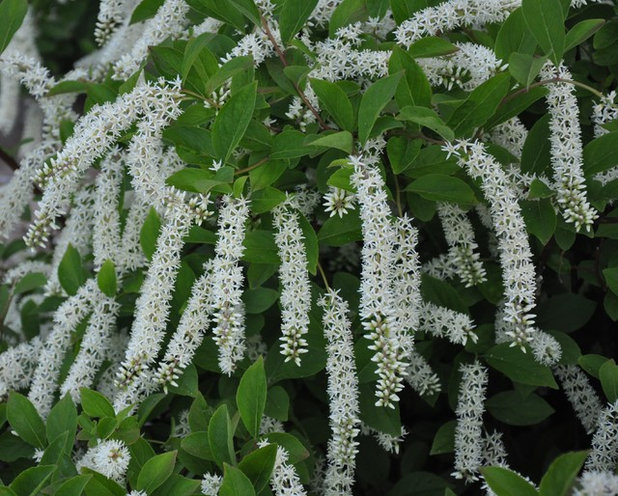
U. of Maryland Arboretum & Botanical Garden
Botanical name: Itea virginica 'Little Henry'
Common name: 'Little Henry'
sweetspire
USDA zones: 5 to 9 (find your zone)
Water requirement: Average to wet
Light requirement: Full sun or partial shade
Mature size: 2 to 3 feet tall and wide
Benefits and tolerances: Attracts butterflies but not deer; tolerates wet soil, although once established it will cope with drier conditions
Seasonal interest: Spring, summer, fall
When to plant: Anytime
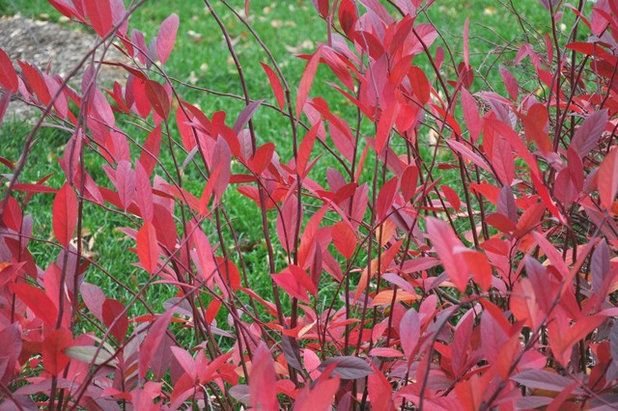
U. of Maryland Arboretum & Botanical Garden
Distinguishing traits. If you're looking for an easy-care shrub with a five-star rating, this is it.
- Flowers: Masses of pendulous racemes of lightly fragrant white flowers cover this shrub in spring.
- Foliage: Healthy medium green leaves turn up the heat in fall with a fiery display to rival the ubiquitous burning bush (Euonymus alatus, zones 4 to 9).
- Form: A tidy, weed-smothering mound
- Size: Unlike its big brother 'Henry's Garnet', 'Little Henry' is only 2 to 3 feet tall and wide — ideal for smaller gardens.
- Soil: Happy with wet feet. Clay soil? No problem.
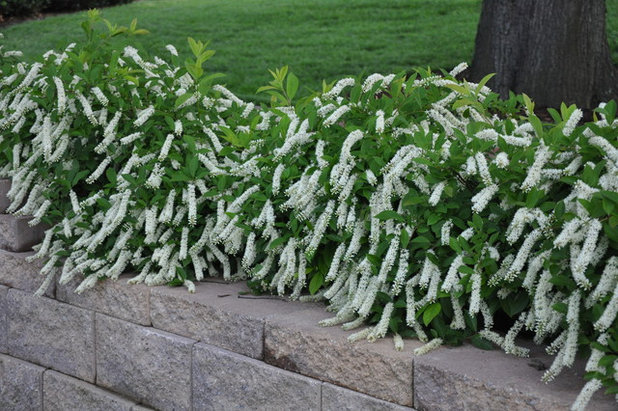
U. of Maryland Arboretum & Botanical Garden
How to use it. I have this shrub massed along a stream bank, where the clay soil and saturated winter conditions are a bonus rather than a problem.
The modest size of 'Little Henry' makes it suitable for the front of the border or perhaps lining a woodland walk, where it blends beautifully with ferns and Japanese maples.
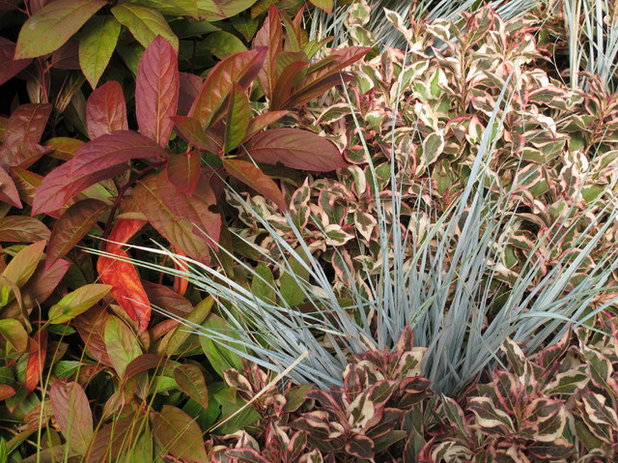
Personal Garden Coach
To me the fall color is its top feature, so be sure to plant this where you can enjoy it at that time of year. Full sun brings out the most intense fall color; combine it with other sun-loving shrubs and grasses to draw attention to this attribute.
This photo shows how the rosy tints of
'My Monet' weigela (
Weigela florida 'My Monet', zones 4 to 6) make an attractive color echo, while '
Blue Dune' lyme grass (
Elymus arenarius 'Blue Dune', zones 4 to 9) cools things down in an exciting display.
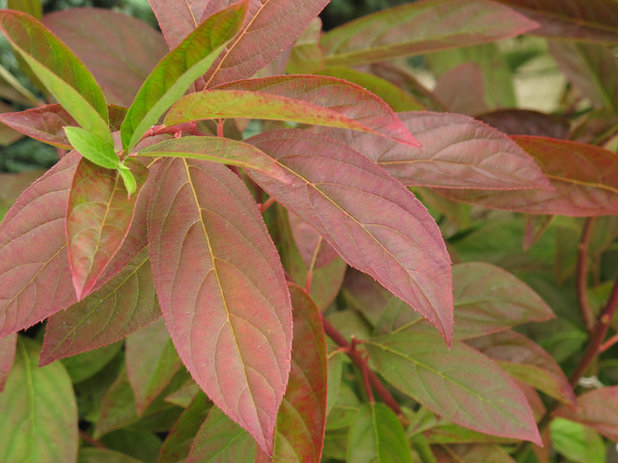
Personal Garden Coach
Planting notes. Think in multiples. One shrub is pretty, but a mass of three, five or more is stunning.
No special treatment is needed when planting. Just tease out the roots and water in well. Some gardeners like to add fertilizer to garden shrubs in spring, but I prefer to just use compost as an annual boost to improve general health and vigor while also helping to retain soil moisture.
It's unlikely that pruning will be necessary, but it can be done immediately after flowering if required.





